Hoffmannseggia glauca, Indian Rushpea
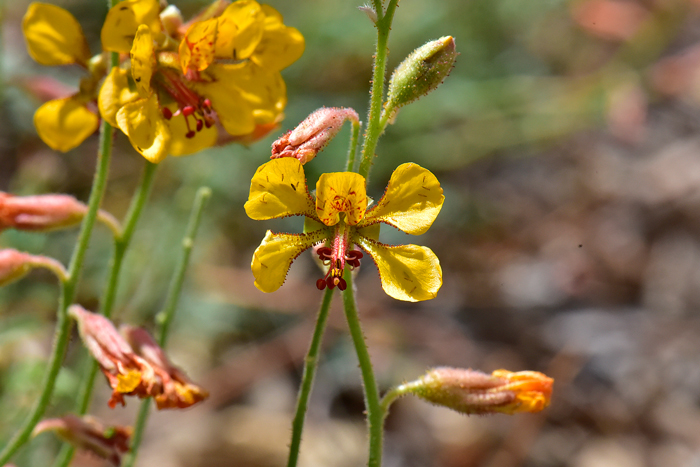
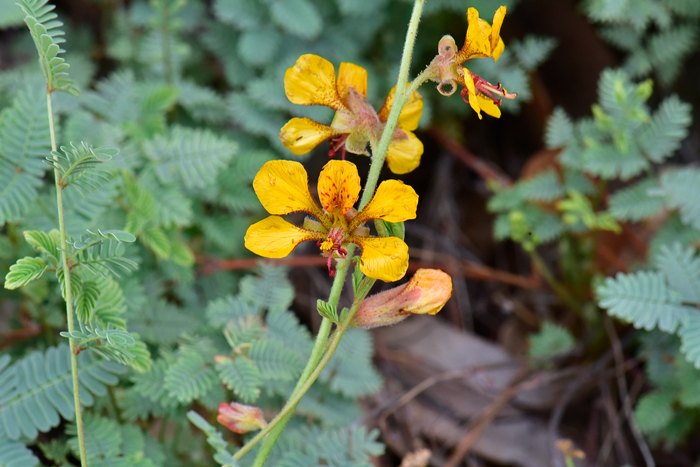
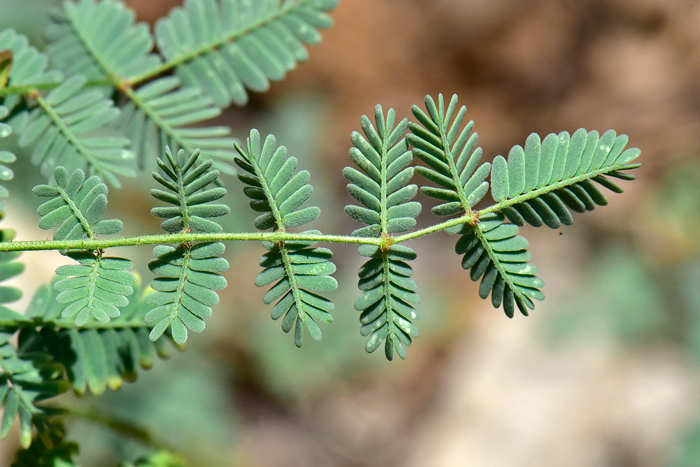
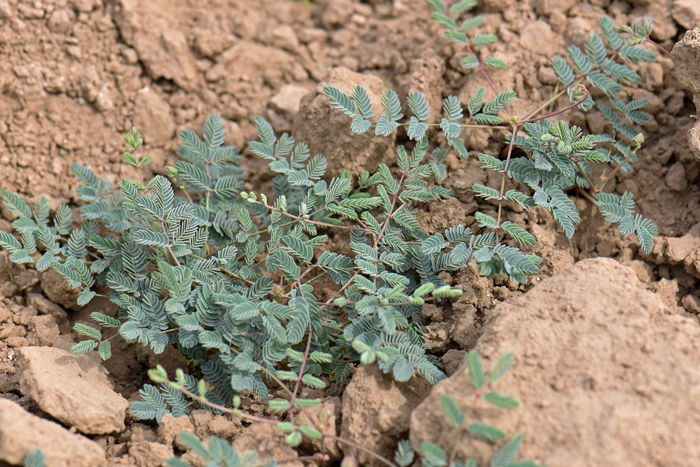
Scientific Name: Hoffmannseggia glauca
Common Name: Indian Rushpea
Also Called: Hog Potato, Pig Nut, Pignut, Shoestring Weed; Spanish: Camote (sweet potato) de Ratón (of the mouse))
Family: Fabaceae or Leguminosae Family
Synonyms: (Hoffmannseggia densiflora, Hoffmannseggia densiflora var. capitata, Hoffmannseggia densiflora var. demissa, Hoffmannseggia densiflora var. pringlei, Hoffmannseggia densiflora var. stricta, Hoffmannseggia falcaria, Hoffmannseggia falcaria var. stricta, Larrea glauca)
Status: Native to the Americas and southern Africa.
Duration: Perennial
Size: 12 inches (30 cm) or usually less.
Growth Form: Indian Rushpea is a Forb/herb or a subshrub; the plants are low growing and erect; branches are slender; note in the top photo that the plants have stalked glands; plants typically grow in colonies or patches, this is possible because the plants have deep tuberous roots.
Leaves: Green; leaves are compound, bipinnate with 4 to 13 secondary leaflets; leaves are glandular, glabrous or minutely puberulous.
Flower Color: Yellow, with orange and red; as with many other parts of the plants, the inflorescence is also glandular, form is a raceme often above the leaves; flower petals 5, spreading; note above that the flowers are not perfectly radially symmetrical; the fruits is also glandular and curved in shape.
Flowering Season: April to September; April to June in California and March to September in Texas.
Elevation: Below 5,000 feet (1,524 m); In California it is generally found below 3,000 feet (900 m).
Habitat Preferences: Dry alkaline desert soils, roadsides, irrigation areas, disturbed areas; in California it prefers alkaline desert flats, creosote bush communities, and disturbed areas.
Recorded Range: Indian Rushpea is found mostly in the southwestern United States in; AZ, CA, CO, KS, NM, NV OK, TX, UT. It is also native to Baja California and Mexico.
North America & US County Distribution Map for Hoffmannseggia glauca.
North America species range map for Hoffmannseggia glauca:
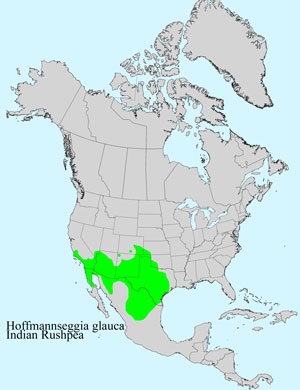
U.S. Weed Information: In North America Hoffmannseggia glauca is listed in 46 states; and can be weedy or invasive according to the following authoritative sources:
Invasive/Noxious Weed Information: In North America Hoffmannseggia glauca is listed as a Noxious Weed by the state of Kansas.
Plants included here are invasive or noxious.
According to Invasive.org; Hoffmannseggia glauca is an Ecological Threat as it “can be weedy and can grow in bare disturbed soils along roadsides. The tuberous roots allow it to form large colonies.”
Wetland Indicator: In North America Hoffmannseggia glauca has the following wetland designations:
FAC = Facultative, occur in wetlands and non-wetlands
FACU = Facultative Upland, usually occur in non-wetlands, but may occur in wetlands
FAC = Facultative, occur in wetlands and non-wetlands.
Threatened/Endangered Information: Unknown
Genus Information: In North America, USDA Plants Database lists 13 native species for Hoffmannseggia. Worldwide, The Plant List includes 32 accepted species names for the genus.
The genus Hoffmannseggia was published in 1798 by José (Joseph) Antonio Cavanilles, (1745-1804).
In the Southwestern United States: Arizona and New Mexico each have 5 species of Hoffmannseggia, California has 3 species, Nevada and Utah each have 2 species and Texas has 11 species. Data approximate, subject to revision.
Comments: The genus Hoffmannseggia is commonly referred to as “rushpeas”. As with many species in the Fabaceae, the fruit are pods. Rushpeas are native to the North- and South-America and also to south Africa. The Spanish common name is Camote de Raton which translates to sweet potato of the mouse.
In Southwest Desert Flora also see: Wand Holdback, Hoffmannseggia microphylla.
The genus Hoffmannseggia was published in 1798 by José (Joseph) Antonio Cavanilles, (1745-1804).
The species epithet “glauca” is from the Greek word “glauca” which means bluish or bluish-gray which may be in reference to the cast or color of its leaves which are bluish-green.
The Spanish common name Camote de Raton translates to Camote or “sweet potato” and de Raton “of the mouse”; and together “sweet potato of the mouse”.
See complete listing of ethno-botanical uses at Native American Ethnobotany, University of Michigan, Dearborn.

